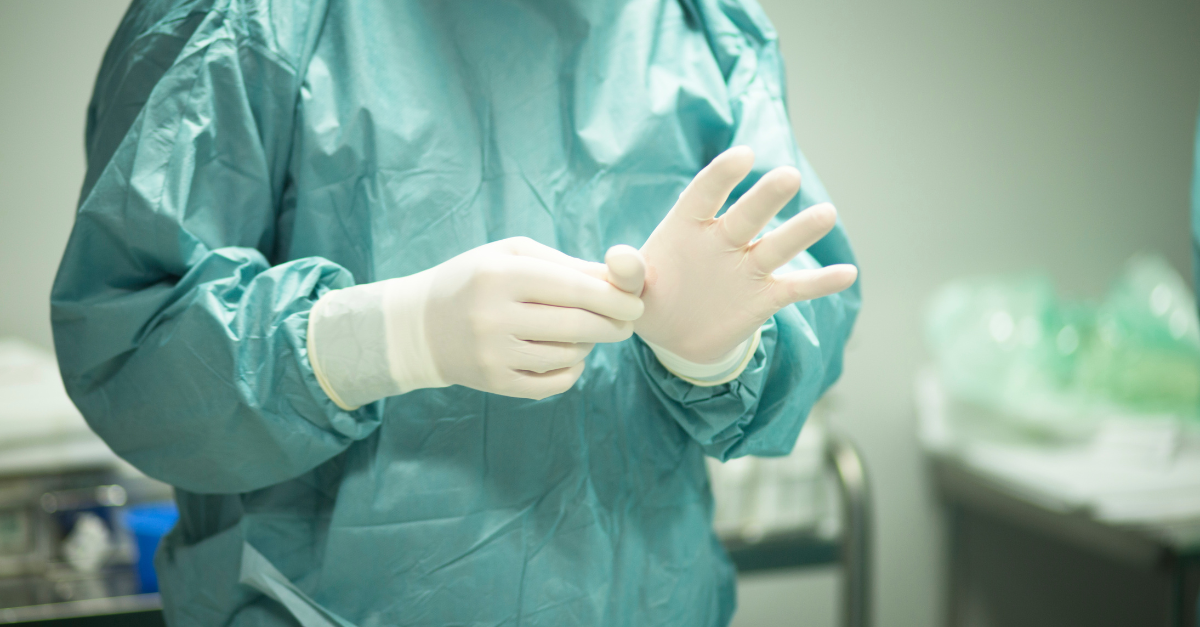Personnel behaviour plays a significant role in the manufacture of sterile products. Aseptic processing occurs under a Laminar Air Flow, which is classified as a Grade A or ISO 4.8 environment. Disturbance of air in the Laminar Air Flow can affect the quality of the final product.
What is ISO?
ISO is the International Organization for Standardization in the pharmaceutical industry. ISO 14644-1 defines cleanrooms and the associated controlled environments. Part 1 of this standard provides the classification of air cleanliness by particle concentration. As ISO standardises the international requirements, the PIC/S Guide to Good Manufacturing Practice, Annex 1 – Manufacture of Sterile Medicinal Products (Version 13) aligns with the ISO 14644-1 guidance.
Definition of a Grade A environment:
"The local zone for high-risk operations, e.g., filling zone, stopper bowls, open ampoules and vials, making aseptic connections. Normally such conditions are provided by a laminar air flow work station."
Purpose of Laminar Air Flow:
"Laminar air flow systems should provide a homogenous air speed...at the working position in open clean room applications..."
PIC/S Guide to Good Manufacturing Practice, Annex 1 – Manufacture of Sterile Medicinal Products, version 14, clause 3.
How is Grade A classified?
The classification of a Grade A environment is determined through the maximum permitted airborne particle concentration. The Grade A airborne particle classification is ISO 4.8 as it determines the limit for particles ≥5.0 µm. For a Grade B environment (at rest), the ISO classification is ISO 5 for measuring airborne particulates both in operation and at rest.
| Grade | Maximum permitted number of particles/m³ equal to or greater than the tabulated size | |||
| At Rest | In Operation | |||
| 0.5 µm | 5.0 µm | 0.5 µm | 5.0 µm | |
| A | 3,520 | 20 (ISO 4.8) | 3,520 | 20 (ISO 4.8) |
| B | 3,520 | 29 (ISO 5) | 352,000 | 2,900 |
Table adapted from PIC/S Guide to Good Manufacturing Practice, Annex 1 – Manufacture of Sterile Medicinal Products, version 14, clause 4.
Working Under the Laminar Air Flow
When working under Laminar Air Flow Cabinets, the airflow is either horizontal (towards the operator) or vertical (from the top of the Cabinet). This means that it is the critical zone and must be protected from turbulence and contamination. Points to consider when working in this critical space are:
- Avoid exposure of open containers in cabinets for longer than is required.
- Ensure that you are not performing aseptic manipulations over an open system, as that may disrupt the clean airflow.
- Minimise non-essential entry into the critical space, for example, placing additional sterile wipes that are not required at that time.
- Wear sterile gloves when gowning for production. If your glove integrity is compromised, leave the clean room and replace it with a new pair, following your standard operating procedures for gowning.
- Ensure gloves are sanitised regularly during the process.
- Make sure your body is not in the Grade A environment and only your hands and wrists are in the Laminar Air Flow. This will reduce movement in the critical zone.
- Do not store materials in the Laminar Air Flow; only decontaminate required materials at the time of use.
- Control movements within and adjacent to the area. Interventions must be performed slowly and deliberately. Doors and hatches around the site must be opened with minimal force.
- Aseptic technique must always be used regardless of any other protection present, and always move slowly and deliberately. Perform a necessary manipulation in a manner that does not compromise the sterility of the product. Keep the entire body out of the path of unidirectional airflow.
- Before use, check the integrity of the sterilised package by visually inspecting for damage or signs of tampering. Check for the absence of water droplets or moisture. Remove inner wrapping in a Grade A environment and avoid touching critical parts during unwrapping.
- Items being protected by the airflow must receive clean ‘first air’, so all operator manipulations must be done downstream of airflow. Items present within the clean zone must be minimised and located so as not to disrupt or reduce airflow. Touch/contact sterile materials only with sterile instruments.

Laminar Air Flow Cabinet Rules
- Always leave the fan on unless the cabinet is scheduled for maintenance and/or recommissioning and recertification.
- Clean the inner surfaces with the dedicated sterile disinfectant that has been validated and approved for use during disinfection efficacy studies.
- Do not touch the HEPA filters with your hands and ensure other items do not touch the HEPA filter as this causes airflow disturbance, possible contamination and can compromise the filter integrity.
- Ensure the cabinet is certified and has a visible calibration label for verification before manufacturing.
Identification of Risk Situations
Risk assessment is a component that must be performed when manufacturing as it plays a significant role in assessing behaviour in the Grade A space. The following represent possible risk situations that should be considered when planning the process as they may have a direct impact on product quality:
- Build-up of exposed product on the processing line during the filling process.
- Touching of critical surfaces such as filling needles as needles have direct contact with the final product.
- Spillage under the Laminar Air Flow, which will require personnel intervention. When a spillage occurs, contact with the critical zone must be made to clean up the spill.
- Contamination of gloved hands if not sanitised by personnel upon entry into the Laminar Air Flow. If operators are entering from a Grade B area into a Grade A Laminar Air Flow, a new pair of sterile gloves must be worn as they are going from a lower grade to a higher grade.
- Breakdown of equipment being used under the Laminar Air Flow may require maintenance staff to attend. This will increase the movement level in the cleanroom environment, causing a potential disturbance in airflow.
How is the Monitoring of Personnel Captured in the Grade A Environment?
"Where aseptic operations are performed, monitoring should be frequent using methods such as settle plates, volumetric air, and surface sampling (e.g., swabs and contact plates). Sampling methods used in operation should not interfere with zone protection. Results from monitoring should be considered when reviewing batch documentation for the finished product release. Surfaces and personnel should be monitored after critical operations. Additional microbiological monitoring is also required outside production operations, e.g., validation of systems, cleaning, and sanitisation."
PIC/S Guide to Good Manufacturing Practice for Medicinal Products, Annex 1 – Manufacture of sterile medicinal products, version 14, clause 18.

To achieve effective monitoring, there should be a risk assessment determining the frequency and location of environmental monitoring. This can be based on reviewing historical data from the facility and thorough validation (which can be performed in parallel with the cleaning validation). The following are used to assess the risk and when environmental monitoring is required:
- Exposure of product to a critical site.
- Critical interventions performed during the process of manufacture.
- There is an increase in turbulent flow in the Laminar Air Flow.
- Significant level of personnel activity under the Laminar Air Flow.
| Type of Monitoring | Method | Frequency |
| Both Hands | Settle Plates | After all critical aseptic operations |
| At the end of each manufacturing session | ||
| Glove Sleeves | Contact Plates | After all critical aseptic operations |
| At the end of each manufacturing session |
Common frequency of testing in the pharmaceutical industry.
If there is growth on glove print plates of personnel, a risk assessment is to be made to define the impact it may have on the final product. To reduce the risk of contamination from personnel, you must ensure they are trained, understand the requirements of clean room environments, and manufacture aseptically. This will result in a sterile final product. Personnel movement is a critical component as it assures a high-quality product and can ensure minimal risk to patients’ health. Keep that good behaviour up!
